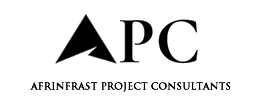
Joe Forde, research lead at BRE and consortium member of the Innovate UK BuildAudIt project, unveils the results of its year-long development and what it means for the built environment
Last year, the Building Research Establishment (BRE) joined an ambitious group of industry, tech and academic professionals to accelerate the built environment’s drive towards net zero.
As a sector which represents 39% of carbon emissions globally, the pressure is on to accelerate progress. Alongside innovations in sustainable materials and technologies, a critical and often overlooked element remains alignment between stakeholders on how to
conceptualise assets – which often comes down to basic principles of measurement, visualisation and data storage.
As part of the BuildAudIt consortium, BRE set out to create a new platform to improve the auditing of existing buildings, which suffer from a lack of BIM modelling or digital twins
compared to their new-build counterparts.
By taking part in this project, we’ve not only pioneered a solution for the sector but fostered a better understanding of individual sustainability journeys across existing assets of all sizes, where enhanced use of digitalisation, visual data capture and artificial intelligence (AI) now has an undeniable role to play.
A look at the last twelve months of BuildAudIt
With backing from Innovate UK’s BridgeAI funding programme, the BuildAudIt team have developed and piloted an AI-powered platform to empower surveyors and auditors conducting pre-retrofit and pre-demolition audits of existing buildings.
Across projects of all sizes, analysing data sets for existing buildings is time-consuming and expensive – with a significant margin for human error given existing datasets can be poorly organised and outdated.
The principal focus has therefore been to enable existing building data (architectural plans, drawings) to be seamlessly combined with data gathered from audits of buildings through a combination of cloud point scanning and photography.
This meant we had to bring a range of tools under one roof to allow operators to benefit from using them in combination and reduce administrative burden. By hosting this information in one place, operators also have a secure digital audit trail for all relevant information on their assets, enabling clearer decision making on their retrofit or demolition.
Project testing
During the pilot phase, we received strong interest in BuildAudIt from operators across the housing, commercial real estate and transport sector. This meant we had the opportunity to put the platform through its paces across retrofit and demolition projects of all sizes to better understand the full potential of the solution.
The platform was tested early on as part of a renovation project for a social housing block in Newcastle. A façade scan of the first floor took 20 minutes, compared with an estimated 1.5 days it would take someone to capture manually. Thanks to the integration of the platform, any measured assets such as windows and walls were automatically captured and stored with accompanying information.
We also had the opportunity to work with two rail operators on their networks to help them capture and better understand their assets – which by their nature vary drastically in age, size and purpose. For a sector with such a broad asset portfolio, plotting an effective trajectory towards net zero will depend on smart data capture tools like BuildAudIt, where project teams can reduce historical workloads required post-scan and access clear sets of
information to assist project planning.
The results
With our pilot successfully completed, I am pleased to share we have achieved proof of concept for the BuildAudIt platform and have shown demonstrable value for auditors and surveyors in better capturing asset information.
Combining the results of our case studies, we were able to demonstrate a 30% time saving for data capture, and more than 30% time saving for data analysis and reporting. These savings will be increased as the platform is finetuned and operators increase their familiarity through training.
Users noted a key benefit was being able to seamlessly share information between a client and auditors, ensuring project stakeholders could operate from a common understanding of an asset’s profile. The simplicity of the platform also has significant implications for usability across a variety of stakeholders, including building owners and facilities management staff who can streamline considerations and reduce workloads for contractors.
Next steps
Having proven the commercial value of the platform, the BuildAudIt team will be focusing on implementing user feedback and scaling up the tool to be ready for commercialisation in the near future.
Once this is achieved, the platform could be utilised across all forms of surveys and auditing for existing buildings, encompassing sustainability, risk, due diligence or condition assessments that are essential for transforming our built environment.
The post We’re on the cusp of an AI breakthrough for building audits and surveys appeared first on Planning, Building & Construction Today.

